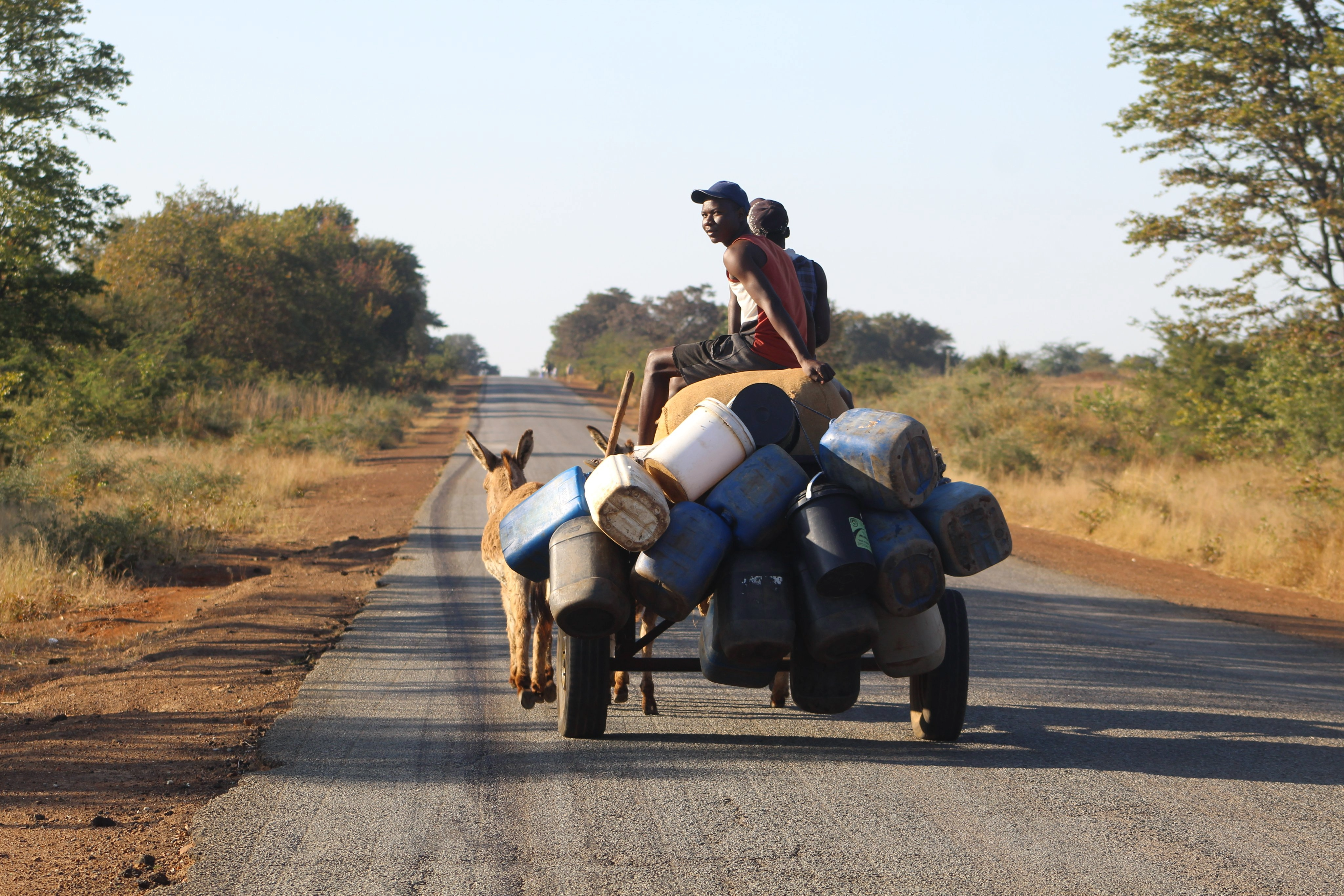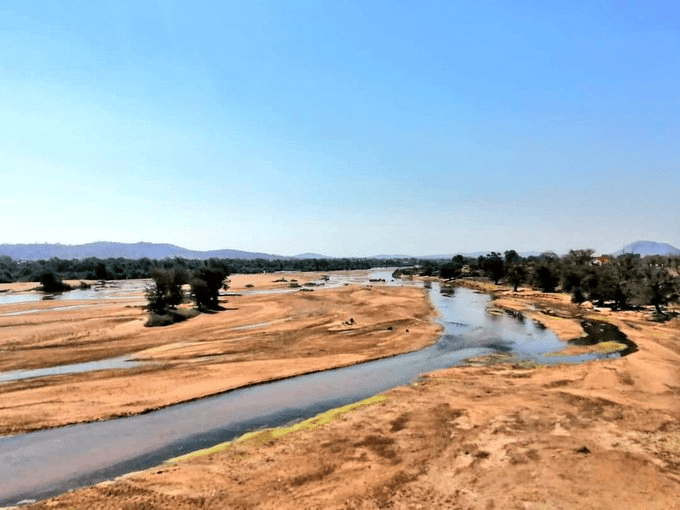Zimbabwe is among other African countries whose people are already experiencing heatwaves, floods, and diseases as climate change takes its toll. Its effects have put hunger and diseases high on the country’s agenda and drawn a clear demarcation line between the rich and the poor, with the underprivileged being the most vulnerable. This has resulted in urban-to-rural migration, the spread of diseases, and human-wildlife conflict among other problems.
Low rainfall seasons have become normal over the past few years in most parts of Zimbabwe which has led to hunger ravaging the country, particularly rural areas. According to a 2022 report from the government-led Food and Nutrition Council, Zimbabwe Vulnerability Assessment Committee, more than 2.7 million people are in need of food aid. The World Food Programme also notes that 42% of the 15.2 million population are living in extreme poverty.
Existing climate patterns and noticeable shifts
There have been noticeable shifts in climate patterns in Zimbabwe with various tropical storms having been experienced over the last 22 years. There has also been consecutive cyclones which began with Eline in 2000, Japhet in 2003, Deneo in 2017, Idai in 2019, Chalane in 2020, Anna in 2021, and Eloise in 2022.
The frequency of dry spells has also altered with droughts being experienced in the farming seasons in 2002-2003, 2007-2008, 2012-2013, 2015-2016, and 2018-2019. Most farmers fear that the current 2023-24 season will result in the worst harvest ever experienced.
According to a report by Advancing Earth and Space Scientists, temperatures have been increasing with 2024 predicted to be the hottest year. Normally, Zimbabwe’s climate seasons can classified by three categories with November to March being hot and wet, May to July being cold and dry, and August to October being hot and dry. However, in what is supposed to be a rainy season, this February the country is seeing more dust than mud.
Water scarcity and effects on agricultural practices

Water continues to be a real challenge in Zimbabwe with most people in rural areas have to walk many miles in searching of it. Meanwhile, there has been no safe water in most cities for more than 20 years with the authorities confirming that source levels are becoming low.
Charles Dewa, who is committed to practical achievements in agriculture and rural development, said:
“These effects and changes are becoming worse each season. For the first time in history, finger millet farmers in Gutu are saying there are now pests that are attacking zviyo (finger millet), we didn’t have those before, they never existed in Zimbabwe. This confirms that there are noticeable climate shifts in Zimbabwe and it is affecting farmers and the market to an extent that we foresee farmers changing crop production”.
Dewa also said that farmers are currently being hit by armyworms which have never previously affected the country but their presence is now increasing. He noted that “these changes are affecting farmers the most and have effects on agricultural practices”.

High temperatures are leading to most rivers that were previously used as water sources drying up, causing water scarcity challenges that affect Zimbabwe’s farmers and agricultural production. One example is the Save river which was previously the route for the transportation of gold from Great Zimbabwe to the Indian Ocean but now there is only sand left, even during the rainy season in January 2024.
Water shortages in Zimbabwe have a different impact on people depending on their wealth status, economic challenges and geographical location. Poor and rural residents are proving to be the most vulnerable. Meanwhile, the rich are resorting to drilling boreholes as a solution.
Anna Brazier, a consultant who works with organizations that deal with sustainable food production and nutrition-sensitive agriculture, said that the poor in both urban and rural areas are affected much worse than people with higher incomes.
“Rural people are prone to more climate hazards, particularly in Zimbabwe droughts, which have become more frequent and more severe. The rainfall patterns are changing so the start and end of the rainfall season is becoming unpredictable and making an impact on poor rural farmers who sometimes do not have capital to invest in irrigation schemes. Mid-season dry spells are becoming more frequent and longer and affect crop production and livestock. Floods and violent storms are becoming worse and high winds cause more damage to rural people who might have little or no information about the coming weather. The changes in rainfall patterns are causing droughts and hunger”.
She added that there is less water for wildlife which is increasing human-wildlife conflict commenting that “in Hwange, many people are losing their lives to animal attacks. There is also a temperature increase, human diseases like malaria and cholera are increasing. People in the eastern part of the country are already vulnerable to malaria”.
Zimbabweans have been experiencing heatwaves with the most recent being in 2023 where data from the Meteorological Department Service showed that most parts of the country were abnormally hot. The highest recorded temperature was 44 degrees celsius in Kanyemba District.
Heatwaves affect people in rural areas particularly their productivity as they limit the amount of work that people can do during the day in the open sun with many having no clothes to protect them. Wild fires are also increasing due to heatwaves.
Brazier noted that “the urban population will be less affected but they will be affected, one of the problems for urban people in Zimbabwe is the concentration of large numbers of people living close together”.
The increase in diseases
Climate change is contributing to the spread of diseases in Zimbabwe by impacting the patterns of vector-borne diseases and increasing the occurrence of outbreaks of disease.
A study undertaken by the National Library for Medicine in Masvingo city in 2021 showed that climate change could shift the disease burden from malaria to arboviruses in Africa, including Zimbabwe. Furthermore, the decline of tsetse in certain areas and the emergence of new disease foci are linked to rising temperatures, potentially leading to, for example, the spread of sleeping sickness.
Tapuwa O’bren Nhachi, a natural resources governance and climate change expert, said:
“the forecasted increase in the future occurrence and intensity of floods, droughts, and disease outbreaks is expected to cause social and economic disruption, affecting millions of people in Zimbabwe. These impacts highlight the interconnectedness of climate change and disease dynamics, emphasizing the need for coordinated efforts in disaster management and public health protection”.
Existing policies and strategies
The Zimbabwean government, under the Ministry of Environment, Water and Climate, has recognized the evident effects of climate change and has drafted a response strategy to guide national measures to address the increasing impacts.
The strategy provides “guidance on the integration of climate change issues into national development planning processes at national, provincial, district and local levels and ensures coordinated activities. The Government’s commitment to develop a climate-resilient Zimbabwe has also been demonstrated by the elevation of the Climate Change Office into a fully-fledged Climate Change Department.”
The policy also notes that “Zimbabwe envisages developing adaptation strategies that can mitigate the diverse and complex impacts of climate change and improve community livelihoods”.

